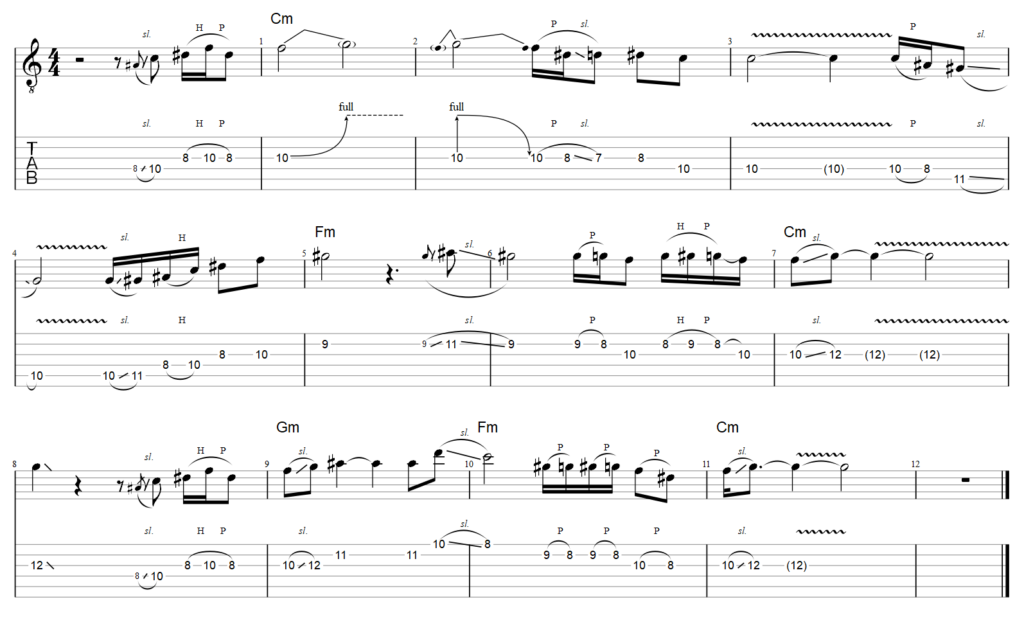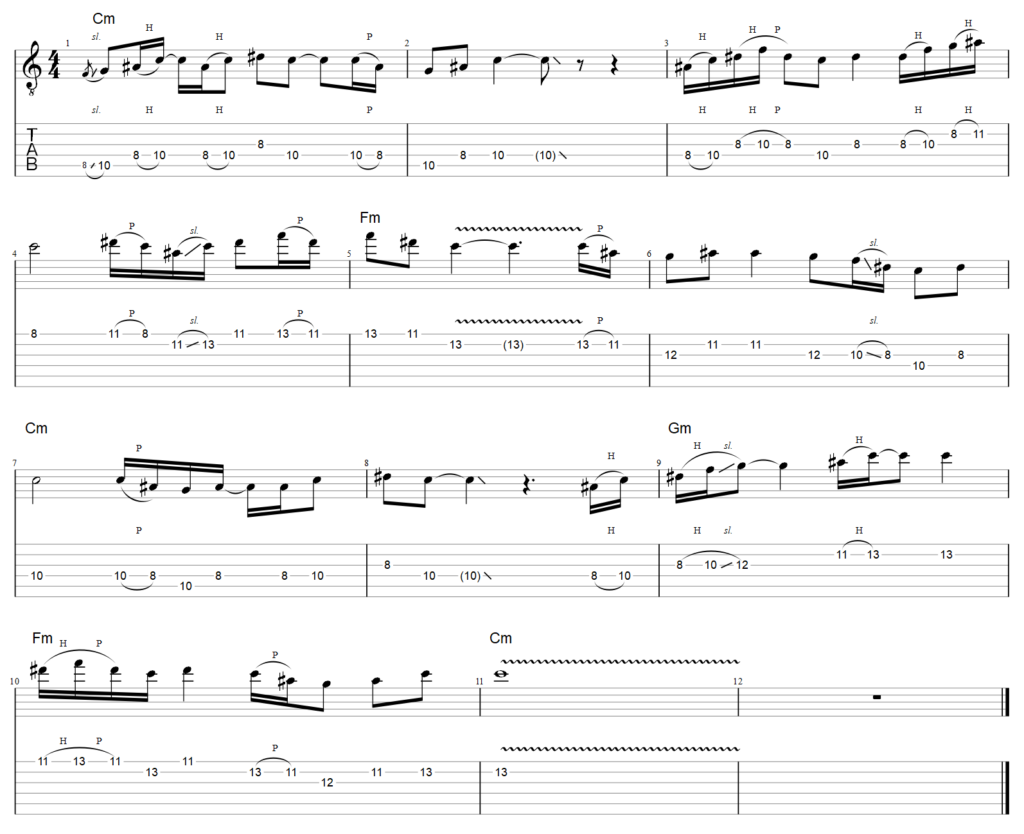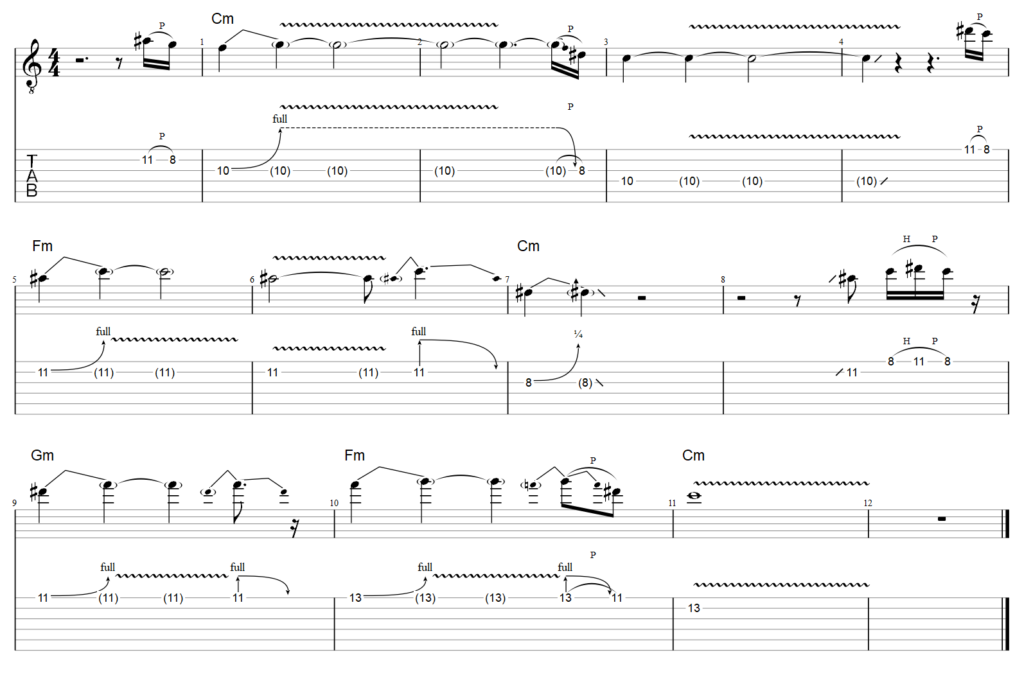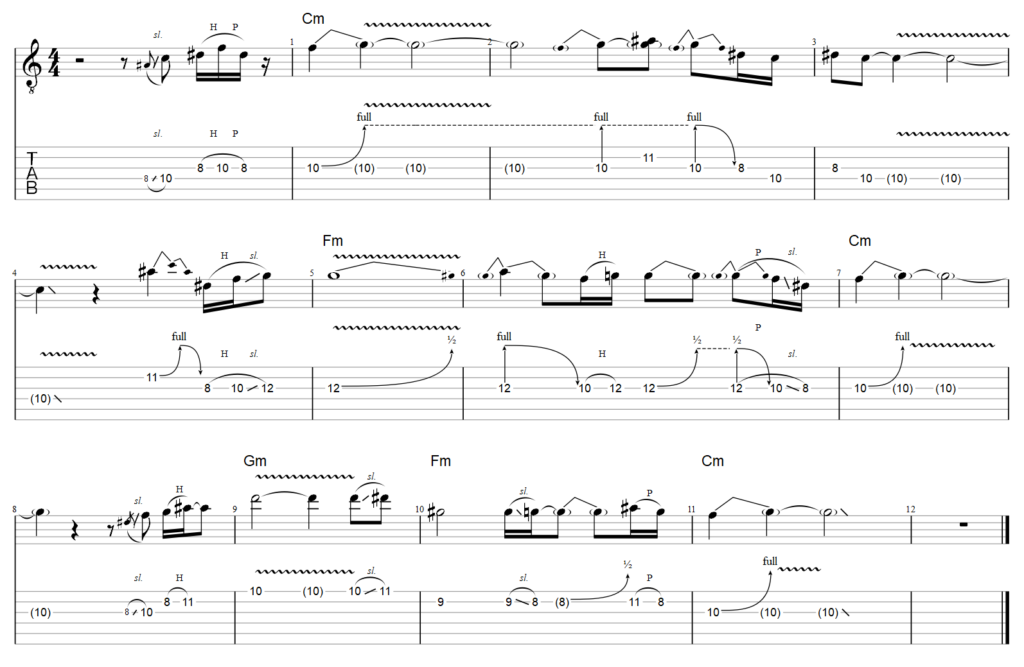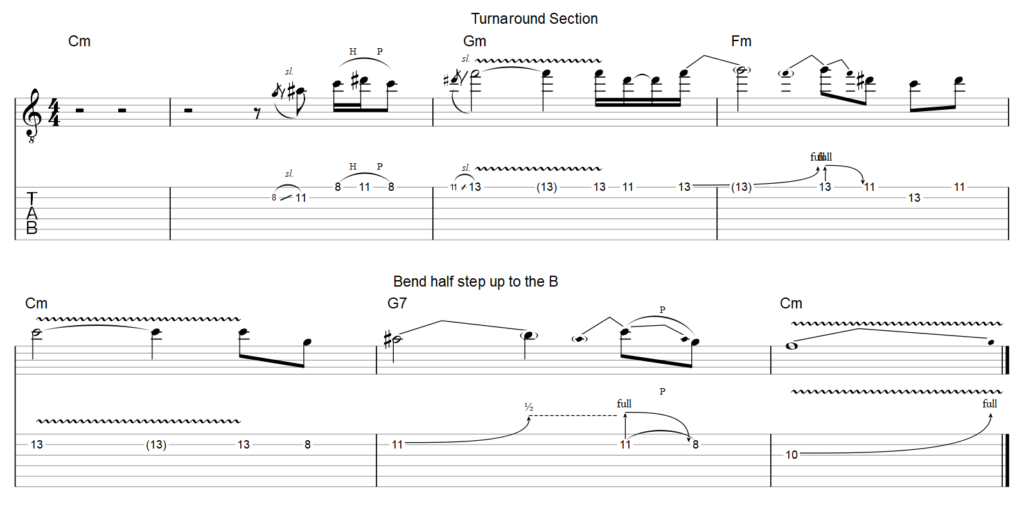Blues chords and scales
This is a slightly confusing topic, and one that tends to contradict a lot of what we learn in common music theory. The best thing to do with blues is to not try correlating it with typical music theory – just learn the basic ideas and think of it simply as “Blues stuff” – it’s just what musicians do in Blues music.
Before I go further, blues can be complex and get a bit “out there” but we’re not talking about any of that. Everything that follows is about typical blues – the type we here from the likes of BB King, Clapton, Freddie King, Stevie Ray Vaughan etc. In many cases it also applies to the heavier style blues rock, Jo Bonomassa, Gary Moore, Johhny Winter etc.
The problem with applying scales to these styles of Blues is we get told a few options. Minor pentatonics, major pentatonics, Major scales, minor scales, blues scales and dominant / Mixolydian scales. The reality is actually a lot simpler, it just takes a while to sink in – especially if you’ve been watching too many Youtube videos and too much interaction on Facebook groups, where most self proclaimed experts don’t really know what they are talking about. Sorry if that sounds arrogant but it’s an unfortunate reality.
When I say think of it all as just “blues stuff” it’s quite important that you understand what this means. In short, it’s just the evolution of taking ideas from all styles of (typical) blues music, old and new and piecing them together. Most of the well known guitarists have built their style by simply listening to others and making things their own. It doesn’t need to be theoretically correct and trying to theorise it usually just leads to the bad information and confusion – the worst offender of them all being told to play Mixolydian over each chord – but we’ll get to that later in major blues.
In the previous parts of this lesson series we concentrated on scale notes, chord tones and making scales more melodic by paying attention to what notes we play over the chords. To some extent, this does also apply to the blues but it’s probably not the best way to go about it. You can go a long way with this style by mostly using the minor pentatonic, learn some solos and a whole bunch of cliche licks over both major and minor blues chord progressions, and spend a whole lot of time practising string bending. Play them over and over until your brain and fingers just piece them together into your own style.
If there was only one rule with blues, I’d say it’s this. Generally speaking we only use minor scales over minor blues chord progressions. For other blues, anything goes.
At the heart of blues is the I-IV-V, but it comes in many flavours and this is where it can tend to get confusing. In the most basic form, in the key of C major for example, this would be C / F / G. In C minor (i-iv-v) this could be Cm / Fm / Gm. We’ll often also see 7th chords among them but we’ll get to that.
For the minor blues, we’ll mostly use the minor pentatonic scale, often with the b5th blues note, and that’s pretty much it. Can it be done differently? Yes. Will it still sound like the blues we expect to hear? Probably not. The natural minor scale is a perfect fit for the chords but will likely sound too sweet or melodic if overused, although in small doses can add a nice touch. This is not what we want in blues most of the time. It typically needs some tension and to be a bit edgy. It’s more about expression with the scale notes, not a perfect melodic fit. Some of this is just my opinion, try what you like but most typical minors blues will be centred around the minor pentatonic.
For major blues, things are different. We can use major scales (sort of), the major or minor pentatonic, good use of the b7th (too often mistaken for Mixolydian) or a mash up of the the lot. Before anyone puts on their arguing hat, remember we’re talking about common blues here. Ok, enough talking, let’s break some of this down and figure out why these things work this way and how maybe it evolved.
Minor Blues
We’ll start with minor blues and get it out of the way because it’s not as complicated. Here’s a chord progression for a basic i-iv-v in C minor.

If this chord progression was used in something like an easily listening pop tune then the C natural minor scale would be a perfect fit because all of the chords are in the key. We can still use this scale for blues but it won’t sound very bluesy – for example, something like this.

Example 34
Using the Natural minor scale.
It sounds OK, nothing wrong with it but it’s possibly a bit too melodic so not very bluesy. This would probably work better for a more blues / rock style. Of course it’s all subjective but generally speaking, the minor pentatonic would sound more like a typical blues.

Example 35
Blues typically makes more use of expression and longer note durations, so as usual, what we want to avoid is playing too much up and down the scale pattern like this, it sounds very amateur.
Example 36
Using long bends and shorter phrases will sound more like blues. We don’t need to be using up all of the notes in a scale pattern to sound any good. For example, this is very simple but more effective.
Example 37
If we use chord tones sparingly (outside of the pentatonic scale) then they can work OK. Here for example I use chord tones on the changes over the Fm and Gm. Adding these notes to the minor pentatonic results in the natural minor scale but because we’re playing mostly pentatonic, it isn’t so bad and can add a nice touch.
That is pretty much the basics of minor blues. Think of this as a kind of framework. The rest of it will come from listening to blues music, learning some solos to well known blues songs and learn a bunch of licks. Most of all work on expression, bends, slides etc. There’s a ton of ways we can bend a note but this will all be for another lesson, this series is more about just the scale choices we can make and some guidance on how to practise them.
The only other thing that I haven’t mentioned here are the various chord progressions you might encounter. We’ll quickly take a look at two common chord progressions used in minor blues, the difference only being in the turnaround.
The first uses a V7 chord in place of the v minor, you’ll see it in different formats but generally could look something like this.

Over the G7 there will be two notes of the minor pentatonic that you need to watch out for because the b3rd in Gm will now be a major 3rd. This is the note B and sits right between the Bb and C of the C minor pentatonic. The diagram below shows where the notes are, the blue dot is the note belonging to G7 and the reds are the ones to watch out for. I call them “avoid notes” but this doesn’t mean don’t try them, this is blues after all and clashing notes aren’t always going to sound wrong, especially when resolved, but as long as you are aware then it makes it easier to know where potential trouble could be.

With that said, this is a great chord to be targeting chord tones on. It’s the last chord in the turnaround, it doesn’t quite belong to the key and often sounds great to highlight it by making it stand out by targeting the B note, especially if you bend into it, maybe something like this.
Example 38
Another common blues chord progression involves the use of a bVI7. I’m not going to explain the theory here or all the variations, but in simple terms it’s just a half step up from the V chord, so in this case it will be Ab7. Just look at the chord diagram below to get the idea. It’s commonly used and I’m sure you’ll recognise the sound.

It’s often more effective and easier to just target chord tones rather than avoid those that might clash. An easy thing to remember when we have a bVI7 chord, the b5 of the blues scale is a good target tone to remember, it fits the chord. If this is then followed by the V7 then it’s also safe to assume that a semitone down is going to be another good note choice for this chord.
In the following example I do just that. Bend up to the Gb (the b7 of the A7 chord) and then over the G7 release the bend back to F (the b7 of G7).
Example 39
Some songs might use a major or Maj7 chord instead of dominant 7 for the bVI chord and they won’t always follow the exact structure used in my example. I’m not going to list all the possibilities, there’s too many, but they are all a variation of the same theme; all that matters is that we have some ideas what to do when we encounter chords that go outside of the key. The bottom line is, when in doubt just target chord tones and you’ll unlikely go wrong.
I mentioned the blues scale, which we haven’t talked about yet, and I’m not going to get in to that here. The blues scale is just an added b5 note in the minor pentatonic scale. Although it gets used quite a lot with blues licks and phrases, it’s mostly used as a passing tone so should be used carefully and not overdone. For the most part it should just be considered an added extra to the minor pentatonic which gives a bluesy sound, but it’s not really a scale note as such. I will be adding some blues licks and soloing ideas in another lesson another time, in the meantime just play around with it and learn some licks, watch Youtube videos etc.

Next, in Guitar Soloing Part 4, we’ll look at Major Blues.

